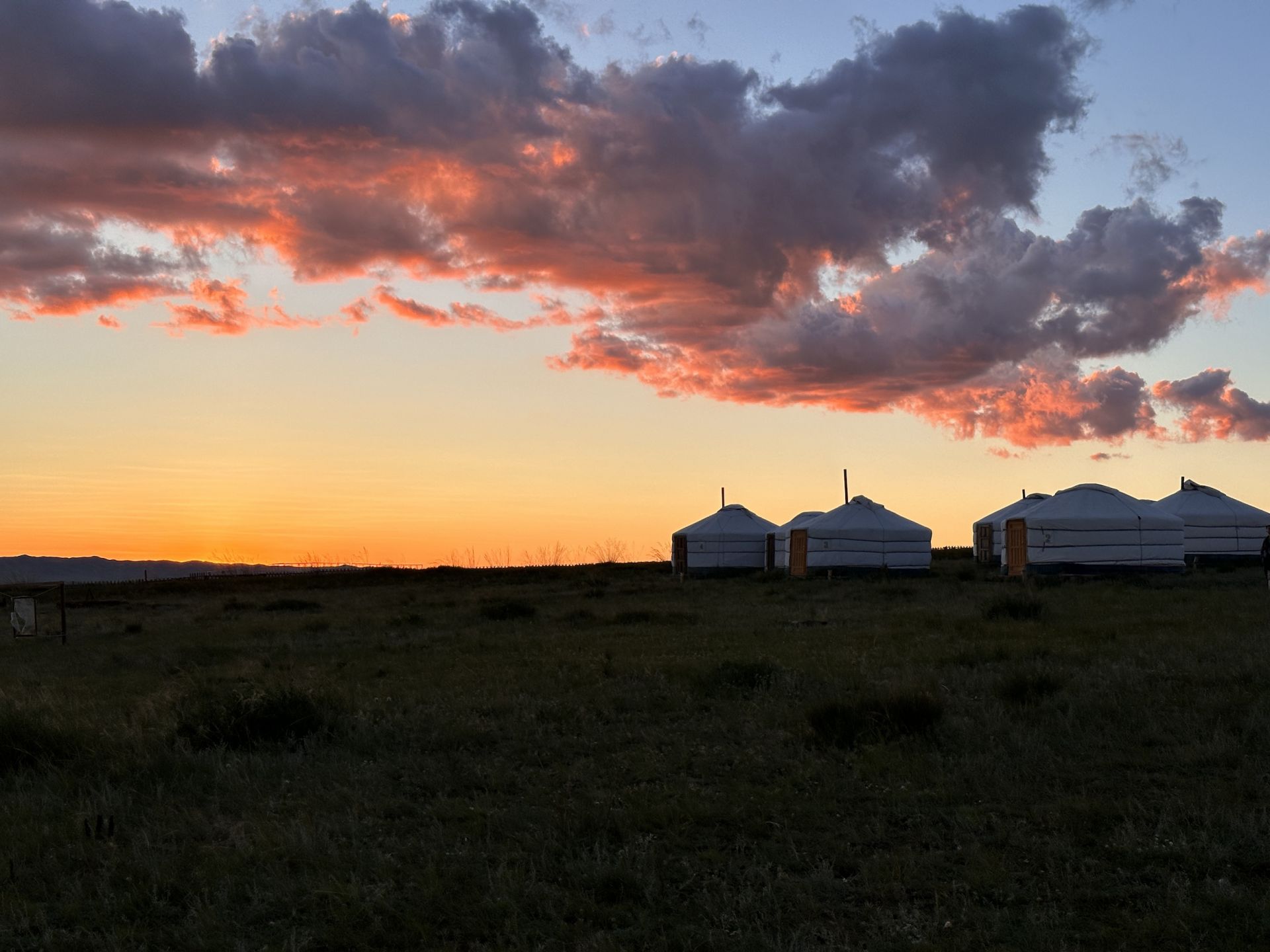Central Mongolia trip
This classic short trip in central Mongolia leads from the "Little Heaven-Elsen tasarkhai" sanddune to the Ulaantsutgalan/Orkhon waterfall.LET'S CREATE TOGETHER YOUR TAILOR-MADE TRIP!
We prepare creative and innovative programmes according to your wishes and your budgetPRICE
Adventure Awaits: Discover Mongolia’s Untamed Beauty
On this thrilling journey, we’ll take you through the untamed and pristine landscapes of Mongolia. From the mesmerizing "Little Heaven—Elsen Tasarkhai" sand dunes to the majestic Orkhon Waterfall, this popular short trek in central Mongolia promises unforgettable experiences.
But this trip is more than just stunning nature and breathtaking views—it’s a chance to immerse yourself in the culture of the world’s last nomads. Visit nomadic families, learn about their timeless way of life, and connect with their warm hospitality. Whether you’re hiking through scenic trails, riding horses or two-humped Bactrian camels, or simply relaxing in the serene quiet of the Mongolian steppe, every moment is an adventure.
HIGHLIGHTS
Ulaanbaatar-Sand Dunes Elsen Tasarkhai-Orkhon Waterfall-Hot Spring-Karakorum/Erdene Zuu Monastery.
Tag 1. Ulaanbaatar
Tag 2. Elsen Tasarkhai, "Little Gobi Desert"
Tag 3. Orkhon Waterfall/staying with a nomadic family
Tag 4. Hot Spring
Tag 5. Karakorum/Erdene Zuu Monastery
Tag 6. Ulaanbaatar
Get ready to explore, discover, and unwind in one of the most unique and beautiful places on Earth.
ITINERARY
Day 1. Arrival in Ulaanbaatar
The departure date for your journey is determined by your international flight to Ulaanbaatar, Mongolia. Upon arrival at Chinggis Khaan Airport, our friendly tour guide will greet you and escort you to your hotel. In the afternoon, enjoy a short city tour to get acquainted with Mongolia’s vibrant capital. You’ll spend the night in a comfortable 4-star hotel, complete with complimentary breakfast, ensuring a restful start to your adventure.
Get ready to explore the heart of Mongolia—your journey begins here!
Day 2. Discover Elsen Tasarkhai: The "Little Gobi Desert
Today’s destination is Elsen Tasarkhai, a unique stretch of sand dunes in the heart of Mongolia’s steppes, often referred to as the "Little Gobi Desert". We’ll arrive around lunchtime, settle into a nearby ger camp, and then set out to explore this stunning landscape. Here, you’ll witness the striking contrast of Bactrian camels wandering the sandy dunes while horses graze on the lush, green steppe nearby. It’s a scene straight out of a dream! For those seeking adventure, you’ll have the option to ride a Bactrian camel or a horse, immersing yourself in the timeless beauty of this unique environment. We’ll spend the night in a cozy ger camp, enjoying breakfast, lunch, and dinner as we reflect on the day’s discoveries.
Get ready to experience the magic of Elsen Tasarkhai—a place where desert and steppe meet in perfect harmony. Accommodation: ger camp. Meals: B, L, and D.
Day 3. Journey to the Orkhon Valley: Immersing in Nomadic Life
Today, we’re heading to our guest family in the Orkhon Valley, where they herd yaks and horses and live a traditional nomadic lifestyle. This is your chance to experience authentic Mongolian culture firsthand. Our journey takes us across vast grassy plains, dotted with basalt cliffs and winding rivers. The slow pace of travel over rugged tracks allows us to soak in the beauty of the landscape and witness the daily life of nomadic herders. In 2004, the Orkhon Valley was designated a UNESCO World Heritage Site, recognized as a cultural landscape of global significance. After lunch, we’ll drive to the Orkhon Waterfall (Ulaantsutgalan), a breathtaking natural wonder formed 20,000 years ago by volcanic eruptions and earthquakes. The waterfall plunges 24 meters into a dramatic gorge, offering stunning views. We’ll hike to the waterfall and take in the surrounding natural beauty. We’ll spend the night with our guest family, enjoying their warm hospitality and a taste of nomadic life. Meals included breakfast, lunch, and dinner. Get ready to connect with nature, culture, and history in the heart of Mongolia!
Day 4. Wellness Time!
Today we're going to Tsagaan Sum, a hot spring. Tsagaansum thermal springs offer healing qualities, particularly in nervous system illnesses. The source is a fully mineralized nitrogen hot spring with silica. The temperatures range from 60 to 75 degrees. The most loving activity is sitting in a relaxing bath and gazing at the stars in the dark sky. (Don't forget to bring your swimming suit!).
Accommodation: Gercamp. Meals: B, L, and D.
Day 5. Karakorum/Monastery Erdene Zuu
Today is our fifth day in Karakorum. In Kharkhorin Soum, there is a lovely little museum that displays everything that has been discovered historically from the many periods of Mongolian history, from the Stone Age to the Mongolian Empire. Karakorum, the Mongol Empire's capital city in the 13th century, was built on the remains of the former capital by King Ugudei, son of the famous Chinggis Khaan. The city was conveniently placed at a junction of historic routes, serving as a staging area for migratory nomads and commercial caravans. Foreign envoys and notable clergy traveled to this city to meet with the Mongol Empire's king. There is also a lovely monastery known as Erdene Zuu. The monastery was built between the years of 1585 and 1586. It is without a doubt Mongolia's oldest Buddhist monastery. It is listed on the UNESCO World Heritage List under the category "Orkhon Valley cultural landscape." After seeing the 3rd Dalai Lama and declaring Tibetan Buddhism the state religion of Mongolia, Prince Abtai Han, Khalh leader and Zanabazar's grandfather, ordered its construction in 1585 outside the ruins of Kharkhorin. The monastery was destroyed by communists in 1939 as part of a purge that resulted in the destruction of hundreds of monasteries and the killing of over 10,000 lamas in Mongolia. Three temples and the outside wall with the stupas were preserved; the temples were converted into museums in 1947. This monastery is still a functioning Buddhist monastery and a museum open to visitors today. Accommodation: ger camp. Meals: B, L, and D.
Day 6. Ulaanbaatar
We still have time to see the capital after we get to Ulaanbaatar. We can go shopping if we like. We go to a folklore show in the evening, which includes traditional musical instruments, music, dance, a contortionist, and the famed throat singing. Accommodation: 3-star hotel with complimentary breakfast
Day 7. Departure
Transfer to Chingis Khaan International Airport or train station and depart Mongolia.









































